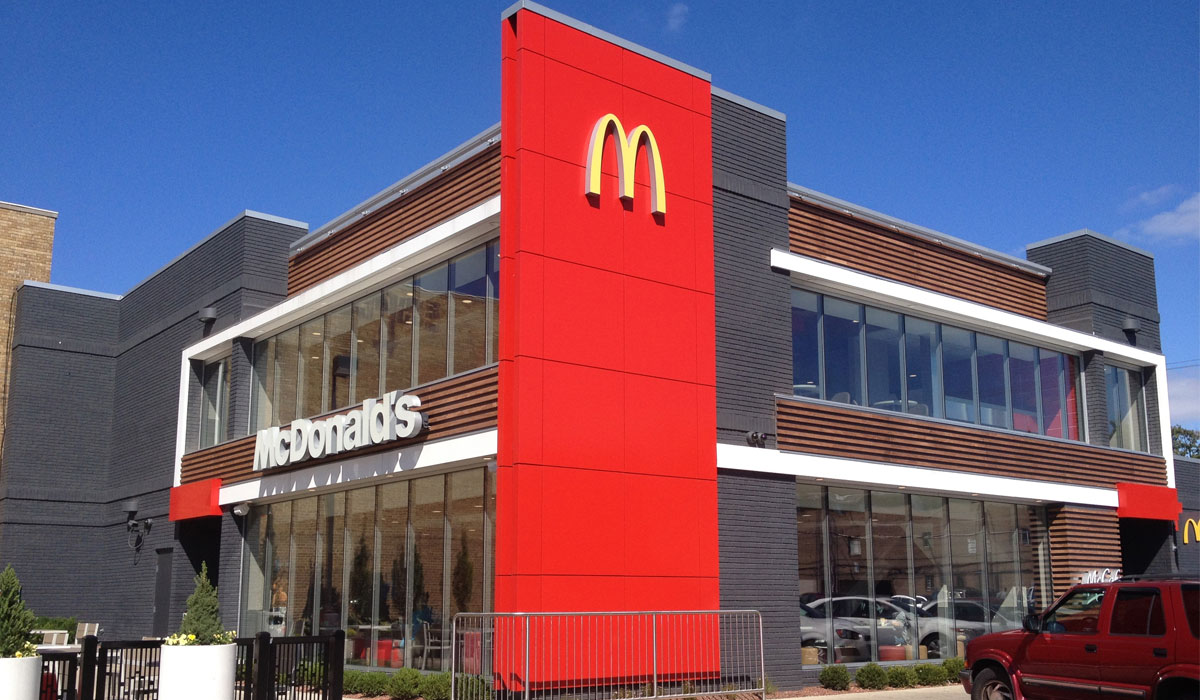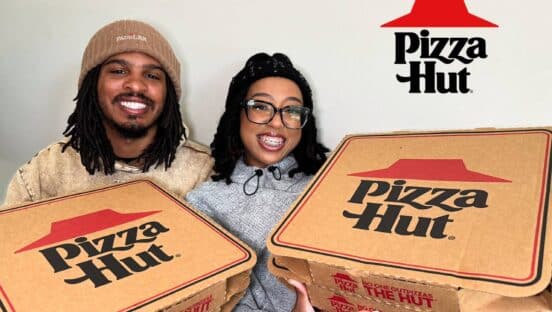First, millennials made restaurant marketers rethink “food as fuel.” Brands from McDonald’s to Taco Bell shifted toward pop culture and a relevant spot in the social conversation. Think fresh beef, tiered value over the cheapest product to push for $1, or a clothing line or pop-up hotel where influencers wield a louder mega-phone than a mascot ever could.
But COVID-19 complicated the connection. Restaurants were asked to deliver food safely and without contact, and then, as the category crowded, to do so in a way that mirrored their differentiators across multiple channels. It wasn’t enough anymore to trade-off convenience and experience—the same way low price and low quality became a less viable marriage in the wake of fast casual.
It’s a vacuum loyalty programs erupted out of in 2020. Generally, consumers associate these—and the discounts, special perks, and convenience that follow—with better customer experience. In a recent report from Bluedot, 69 percent of respondents said loyalty platforms bring them back to a restaurant.
Flipped around, they provide insight into guest behaviors and preference for restaurants that were hard to come by during COVID, helping, to some extent, replace the face-to-face engagement lost to restrictions. The data can inform marketing efforts and offer operators a direct line to guests, from push notifications to menu updates to more profitable and wallet-friendly introductions to the brand (direct delivery or online ordering for pickup).
Paytronix, in early October, released its first Loyalty Report, which examined trends across loyalty, including visits, spend, member demographics, and program types.
Again, this comes on the heels of a watershed year of sorts for rewards. McDonald’s, Taco Bell, Wendy’s, Chipotle, and others, all either launched or relaunched programs against the COVID backdrop.
Paytronix looked at the highest-spending 10 percent of loyalty members in 2020. While core guests accounted for 7.8 percent of spend in January, it upped to 8.8 percent in March as coronavirus hit. During the lowest points, it rose to 9.4 percent in April. Loyalty users were responsible for a bigger proportion of total sales following the pandemic onset, the company said, which proved loyalty guests continued to visit more often than non-loyalty guests, difficult times or not. When observing a population of only loyalty members, the top 10 percent of loyalty guests accounted for more than half of all spend for eight months of 2020.
Framed differently, despite everything thrown at quick-serves in 2020, the segment saw only a 2 percent decline in average annual visits among loyalty members.
Send per guest at quick-service restaurants grew in 2020 as well after hardly gaining ground from 2018–2019. Loyalty guests who visited at least twice annually spent about $7, or 6 percent, more over the course of the year, the report showed. Coupled with a minimal decline in visits, loyalty guests spent more per trip in 2020 than in 2019. For the year, the average spend was $120.11. It was $113.03 in 2019 and $113.07 the year before that.
From Paytronix’s view, the core values of loyalty programs held steady last year, yet the approach changed. A “bankable points” model gained importance “likely because it offers more customer autonomy,” the company said. Brands were forced in 2020 to provide a multitude of options based on diners’ comfort levels with personal safety—something unique in the history of running restaurants. And from the extremes of getting back into dining rooms versus swearing off contact forever, guests found their preferences.
Per eMarketer, in-store mobile payment usage grew 28 percent domestically last year. Whether or not this is becoming table-stakes, or is already in quick service, the incentives to join the movement are clear, as Paytronix pointed out: On average, mobile wallet users visit 42 percent more often, and Google Pay and Apple Pay can increase conversion rate in online ordering by more than 20 percent.
Here are some key points to emerge from the overall study:
- Loyalty members’ checks were 6 percent larger on average than those of non-loyalty members over the course of the year.
- For eight months of 2020, the top 10 percent of loyalty members accounted for more than half of all loyalty spend at their favorite brands.
- Brands specializing in ice cream or coffee had a banner year in 2020 despite the pandemic, realizing average increases of 7 percent in visits and 26.5 percent in spend.
- Spend per visit increased across all restaurant and convenience segments.
So what makes a healthy loyalty program? “Penetration rate,” as the report outlined, is defined as the percentage of all checks associated with a loyalty account. Critical mass occurs at about 15 percent, which Paytronix said should be the year-one goal post launch. Even if a brand’s loyalty members spend 30 percent more annually (the upper end of the typical range) it won’t move the needle much if they constitute only 5 percent of a restaurant’s total guest base.
“Excellent performance” falls between 25–35 percent, while top-tier performers can get penetration figures of 50 or even 70 percent. Panera, for instance, is sitting at 50 percent penetration rate and 40 million loyalty members.
Something worthwhile to follow—“surprise and delight” programs proved the least used in Paytronix’s study at just 2 percent. These setups, which reward guests based on algorithms and user data (unexpected rewards to drive excitement), might generate loyalty and present an easy way to control reward costs, but are among the more difficult to execute.
Automatic conversion was No. 1 at 44 percent (these tend to offer only one form of reward). Bankable points (31 percent, guests accumulate points and redeem them for rewards of their choosing), qualified visits (8 percent, essentially a digital version of a punch card), and layered/other (15 percent, things like beer clubs, tiers, subscriptions, or other programs that don’t follow a standard model) rounded out the list.
As mentioned before, “bankable points” programs grew in preference during COVID. Another reason why, Paytronix said, is because guests want the ability to choose when and how to redeem rewards.
McDonald’s, which launched its first U.S. loyalty platform in June, follows the bankable points framework, where consumers earn 100 points for every dollar they spend and can cash in at increments of 1,500, 3,000, 4,500, and 6,000 points. Here’s a look at how fast it got out of the gates.
Starbucks, Chick-fil-A, and Wendy’s follow this model a well. “This not only gives guests the freedom to choose how they spend their points, but also ensures that they are never far away from a free item,” Paytronix said. “The program thus offers value to low-frequency guests, not just the high-volume ones.”
“During a tumultuous 2020, loyalty programs shone through as one of the key survival tools for brands in the restaurant and convenience industries,” added Andrew Robbins, CEO of Paytronix, in astatement. “The best programs are those that look beyond simply enticing customers with offers and leans into the idea of personalizing the customer journey. In this way a loyalty platform is part of a broader guest engagement strategy that touches all parts of the guest experience, whether that’s digital, physical, or a combination of both.”
The digital future of restaurants promises both convenience and choice, the report added. Loyalty will play a lead role unlocking that.
As the bankable points popularity shows, consumers prefer the option to choose different rewards and progress at a quick pace. Merchants, Paytronix added, also benefit from guests redeeming points for non-core items like drinks, sides, apps, and desserts. Since they’re typically add-ons to check, cannibalization is minimized because guests will likely still pay for their entrée while redeeming their reward.
At the end of the day, it said, brands are both connecting with guests on a personal level and driving a higher ROI.
Paytronix, in a survey with PYMNTS, found 57 percent of guests who already use one restaurant loyalty program would spend more on food at other restaurants if they had access to a loyalty program there as well. Roughly 40 percent of quick-serve consumers said a lack of available programs was the primary reason they’re not using loyalty today. So we’re talking a potentially 40 million consumer pool. “If consumer demand is any indication—as it surely ought to be—programs will continue to flourish throughout the rest of 2021 and beyond,” the company said.






